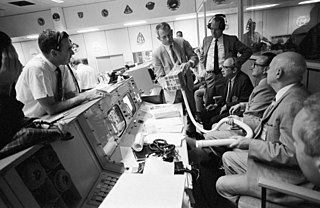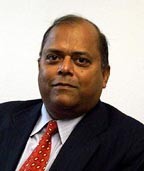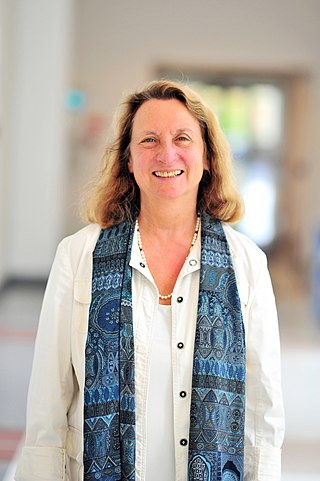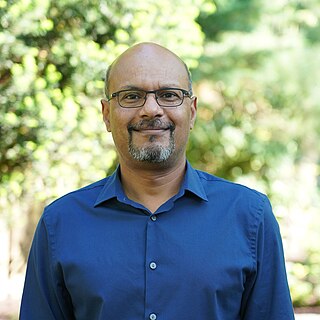Related Research Articles

Aerodynamics is the study of the motion of air, particularly when affected by a solid object, such as an airplane wing. It involves topics covered in the field of fluid dynamics and its subfield of gas dynamics, and is an important domain of study in aeronautics. The term aerodynamics is often used synonymously with gas dynamics, the difference being that "gas dynamics" applies to the study of the motion of all gases, and is not limited to air. The formal study of aerodynamics began in the modern sense in the eighteenth century, although observations of fundamental concepts such as aerodynamic drag were recorded much earlier. Most of the early efforts in aerodynamics were directed toward achieving heavier-than-air flight, which was first demonstrated by Otto Lilienthal in 1891. Since then, the use of aerodynamics through mathematical analysis, empirical approximations, wind tunnel experimentation, and computer simulations has formed a rational basis for the development of heavier-than-air flight and a number of other technologies. Recent work in aerodynamics has focused on issues related to compressible flow, turbulence, and boundary layers and has become increasingly computational in nature.

Computational fluid dynamics (CFD) is a branch of fluid mechanics that uses numerical analysis and data structures to analyze and solve problems that involve fluid flows. Computers are used to perform the calculations required to simulate the free-stream flow of the fluid, and the interaction of the fluid with surfaces defined by boundary conditions. With high-speed supercomputers, better solutions can be achieved, and are often required to solve the largest and most complex problems. Ongoing research yields software that improves the accuracy and speed of complex simulation scenarios such as transonic or turbulent flows. Initial validation of such software is typically performed using experimental apparatus such as wind tunnels. In addition, previously performed analytical or empirical analysis of a particular problem can be used for comparison. A final validation is often performed using full-scale testing, such as flight tests.
Fluid mechanics is the branch of physics concerned with the mechanics of fluids and the forces on them. It has applications in a wide range of disciplines, including mechanical, aerospace, civil, chemical, and biomedical engineering, as well as geophysics, oceanography, meteorology, astrophysics, and biology.

Mesh generation is the practice of creating a mesh, a subdivision of a continuous geometric space into discrete geometric and topological cells. Often these cells form a simplicial complex. Usually the cells partition the geometric input domain. Mesh cells are used as discrete local approximations of the larger domain. Meshes are created by computer algorithms, often with human guidance through a GUI, depending on the complexity of the domain and the type of mesh desired. A typical goal is to create a mesh that accurately captures the input domain geometry, with high-quality (well-shaped) cells, and without so many cells as to make subsequent calculations intractable. The mesh should also be fine in areas that are important for the subsequent calculations.

Bram van Leer is Arthur B. Modine Emeritus Professor of aerospace engineering at the University of Michigan, in Ann Arbor. He specializes in Computational fluid dynamics (CFD), fluid dynamics, and numerical analysis. His most influential work lies in CFD, a field he helped modernize from 1970 onwards. An appraisal of his early work has been given by C. Hirsch (1979)

Guy Antony Jameson, FRS, FREng is Professor in the Department of Aerospace Engineering at Texas A&M University. Jameson is known for his pioneering work in the field of computational fluid dynamics. He has published more than 300 scientific papers in a wide range of areas including computational fluid dynamics, aerodynamics, and control theory.

Aerospace engineering is the primary field of engineering concerned with the development of aircraft and spacecraft. It has two major and overlapping branches: aeronautical engineering and astronautical engineering. Avionics engineering is similar, but deals with the electronics side of aerospace engineering.
Wei ShyyJP is a Taiwanese aerospace engineer who served as the 4th President of the Hong Kong University of Science and Technology (HKUST) from 2018 to 2022 with his acting presidency starting from 1 February 2018. He also holds a concurrent appointment as Chair Professor of Mechanical & Aerospace Engineering. He first joined HKUST in August 2010 as Provost.
Vorticity confinement (VC), a physics-based computational fluid dynamics model analogous to shock capturing methods, was invented by Dr. John Steinhoff, professor at the University of Tennessee Space Institute, in the late 1980s to solve vortex dominated flows. It was first formulated to capture concentrated vortices shed from the wings, and later became popular in a wide range of research areas. During the 1990s and 2000s, it became widely used in the field of engineering.

Ramesh K. Agarwal is the William Palm Professor of Engineering in the department of Mechanical Engineering and Materials Science at Washington University in St. Louis. He is also the director of Aerospace Engineering Program, Aerospace Research and Education Center and Computational Fluid Dynamics Laboratory at WUSTL. From 1994 to 1996, he was the Sam Bloomfield Distinguished Professor and Chair of Aerospace Engineering department at Wichita State University in Wichita, Kansas. From 1996 to 2001, he was the Bloomfield Distinguished Professor and the executive director of the National Institute for Aviation Research at Wichita State University. Agarwal received Ph.D in Aeronautical Sciences from Stanford University in 1975, M.S. in Aeronautical Engineering from the University of Minnesota in 1969 and B.S. in Mechanical Engineering from Indian Institute of Technology, Kharagpur, India in 1968.
In applied mathematics, a grid or mesh is defined as the set of smaller shapes formed after discretisation of a geometric domain. Meshing has applications in the fields of geography, designing, computational fluid dynamics, and more generally in partial differential equations numerical solving. The geometric domain can be in any dimension. The two-dimensional meshing includes simple polygon, polygon with holes, multiple domain and curved domain. In three dimensions there are three types of inputs. They are simple polyhedron, geometrical polyhedron and multiple polyhedrons. Before defining the mesh type it is necessary to understand elements.

Dimitris Drikakis, PhD, FRAeS, CEng, is a Greek-British applied scientist, engineer and university professor. His research is multidisciplinary. It covers fluid dynamics, computational fluid dynamics, acoustics, heat transfer, computational science from molecular to macro scale, materials, machine learning, and emerging technologies. He has applied his research to diverse fields such as Aerospace & Defence, Biomedical, and Energy and Environment Sectors. He received The William Penney Fellowship Award by the Atomic Weapons Establishment to recognise his contributions to compressible fluid dynamics. He was also the winner of NEF's Innovator of the Year Award by the UK's Institute of Innovation and Knowledge Exchange for a new generation carbon capture nanotechnology that uses carbon nanotubes for filtering out carbon dioxide and other gases.

Elaine Surick Oran is an American physical scientist and is considered a world authority on numerical methods for large-scale simulation of physical systems. She has pioneered computational technology to solve complex reactive flow problems, unifying concepts from science, mathematics, engineering, and computer science in a new methodology. An incredibly diverse range of phenomena can be modeled and better understood using her techniques for numerical simulation of fluid flows, ranging from the tightly grouped movements of fish in Earth's oceans to the explosions of far-flung supernovae in space. Her work has contributed significantly to the advancement of the engineering profession.
Mujeeb R. Malik is a Pakistani born American aerospace engineer serving as Senior Aerodynamicist at NASA Langley Research Center. He is known for his research in boundary layer stability, laminar-turbulent transition, computational methods and aerodynamic simulations. He was the architect of CFD Vision 2030, a NASA-sponsored study to advance the state-of-the-art of computational fluid dynamics (CFD) by exploiting high performance computing and modern validation experiments.

A blade vortex interaction (BVI) is an unsteady phenomenon of three-dimensional nature, which occurs when a rotor blade passes within a close proximity of the shed tip vortices from a previous blade. The aerodynamic interactions represent an important topic of investigation in rotorcraft research field due to the adverse influence produced on rotor noise, particularly in low speed descending flight condition or maneuver, which generates high amplitude impulsive noise.
Guru Guruswamy is an American engineer working as Principal Scientist at Ames Research Center since 1988. He pioneered research in the area of computational aeroelasticity that involves Unsteady Aerodynamics, Finite Element Methods, Computational Fluid Dynamics, Parallel Computing and Problem-Solving Environment. His innovative research was utilized in the first commercial 3-D computational aeroelasticity software developed by a major aerospace industry. The aeroelasticity legend Holt Ashley extensively referred to Guruswamy's research in his classical review paper. In 1988 he demonstrated the unique use of Transonic Small Perturbation based CFD for designing active controls to increase the safety of aircraft. It was followed by a break through development of Euler flow equations based Computational Aeroelasticy. It was cited by another Aeroelasticity legend John Dugundji of MIT as an important milestone in Aeroelasticity. A google search shows about 150 researchers took advantage Guruswamy's work based on the Euler equations for follow-up developments.

Subrata Roy is an Indian-born American inventor, educator, and scientist known for his work in plasma-based flow control and plasma-based self-sterilizing technology. He is a professor of Mechanical and Aerospace Engineering at the University of Florida and the founding director of the Applied Physics Research Group at the University of Florida. He is also the President and the founder of SurfPlasma Inc., a biotechnology company in Gainesville, Florida.

Rajat Mittal is a computational fluid dynamicist and a professor of mechanical engineering in the Whiting School of Engineering at Johns Hopkins University. He holds a secondary appointment in the Johns Hopkins University School of Medicine. He is known for his work on immersed boundary methods (IBMs) and applications of these methods to the study of fluid flow problems.

Lyle Norman Long is an academic, and computational scientist. He is a Professor Emeritus of Computational Science, Mathematics, and Engineering at The Pennsylvania State University, and is most known for developing algorithms and software for mathematical models, including neural networks, and robotics. His research has been focused in the fields of computational science, computational neuroscience, cognitive robotics, parallel computing, and software engineering.

Joaquim R. R. A. Martins is an aerospace engineer, academic, and author. He is the Pauline M. Sherman Collegiate Professor in the Department of Aerospace Engineering at the University of Michigan, where he directs the Multidisciplinary Design Optimization Laboratory. He also has a courtesy appointment in the Department of Naval Architecture and Marine Engineering.
References
- 1 2 "Joe F. thompson Ph.D." Mississippi State University Aerospace Engineering. Archived from the original on May 27, 2011. Retrieved 2011-07-13.
- ↑ Thompson, J. F.; Warsi, Z. U. A.; Mastin, C. W. (1985). Numerical Grid Generation: Foundations and Applications. North-Holland. ISBN 978-0-521-79309-4.
- ↑ "Aerodynamics Award". AIAA. Retrieved 2009-04-25.
- ↑ "Points of PRIDE" (PDF). Mississippi State University. Archived from the original (PDF) on 2009-04-20. Retrieved 2009-04-25.